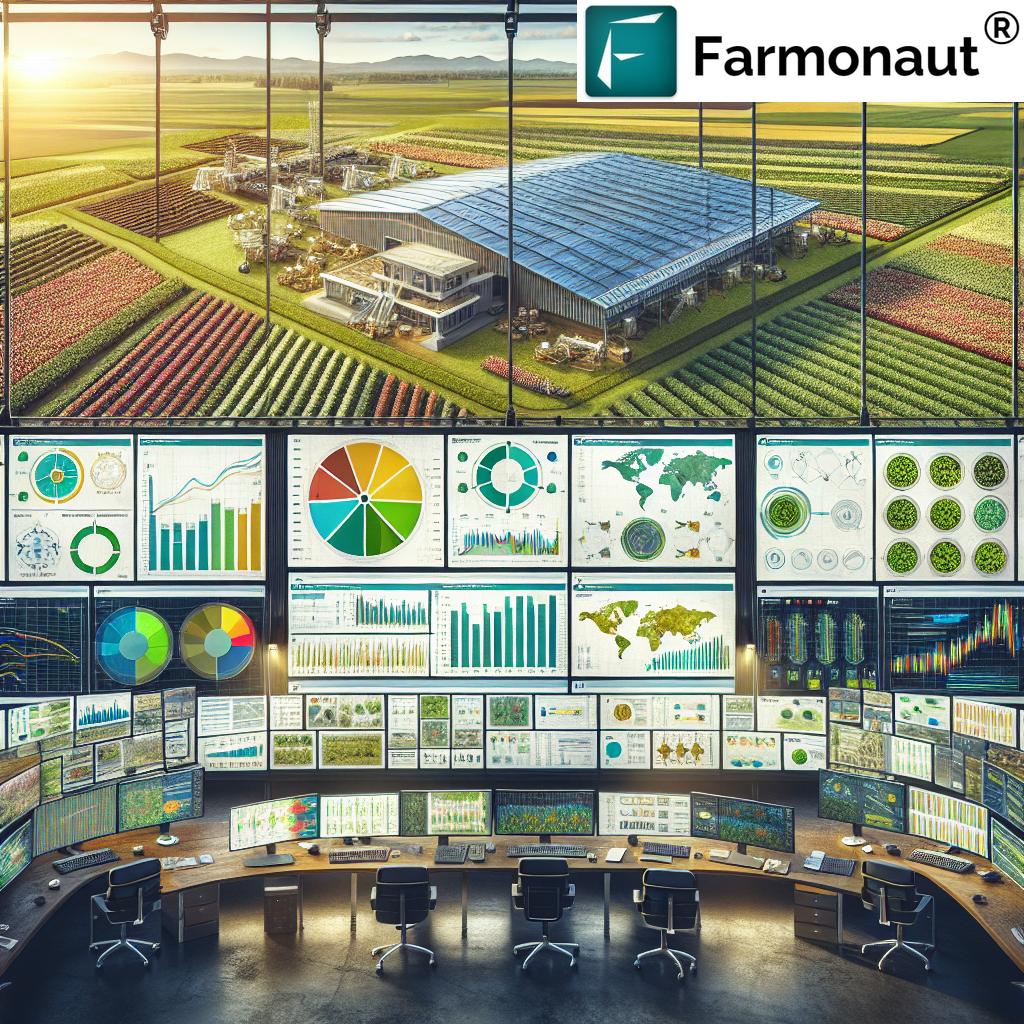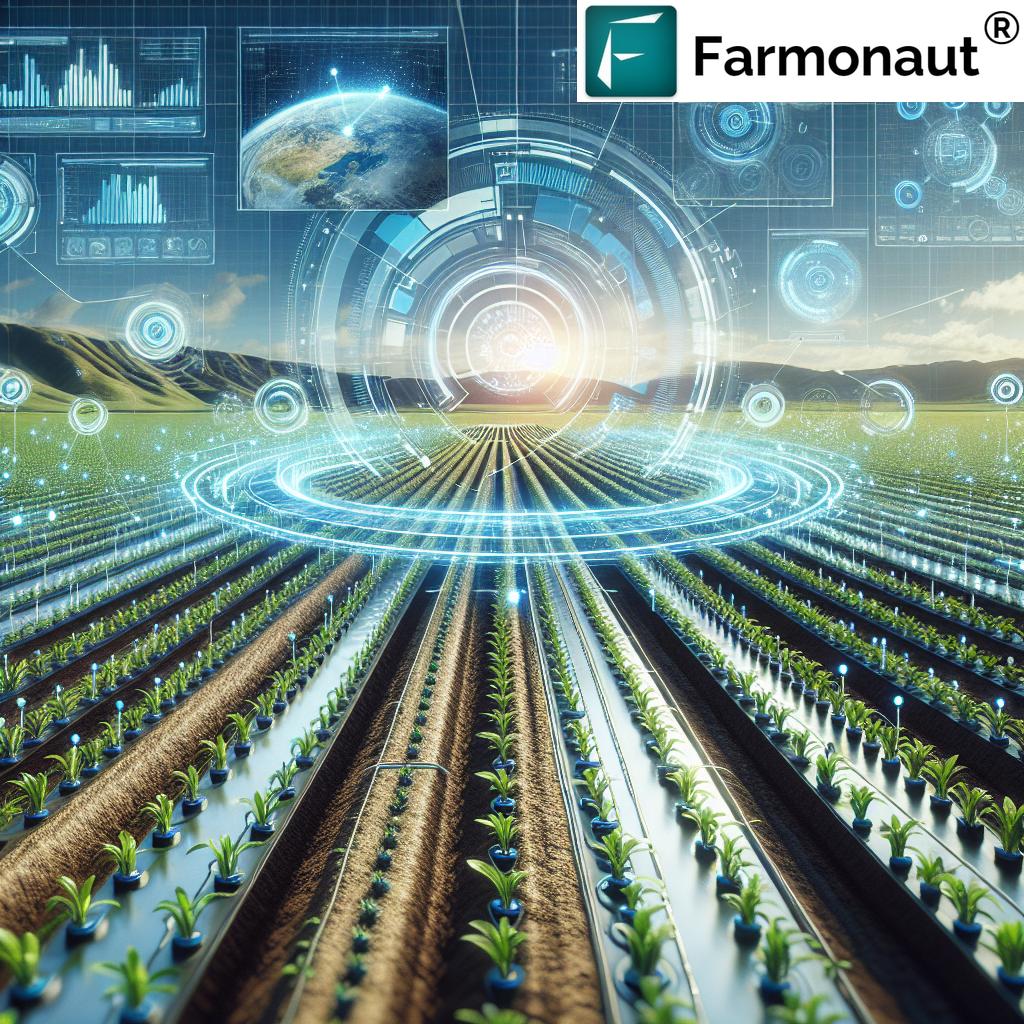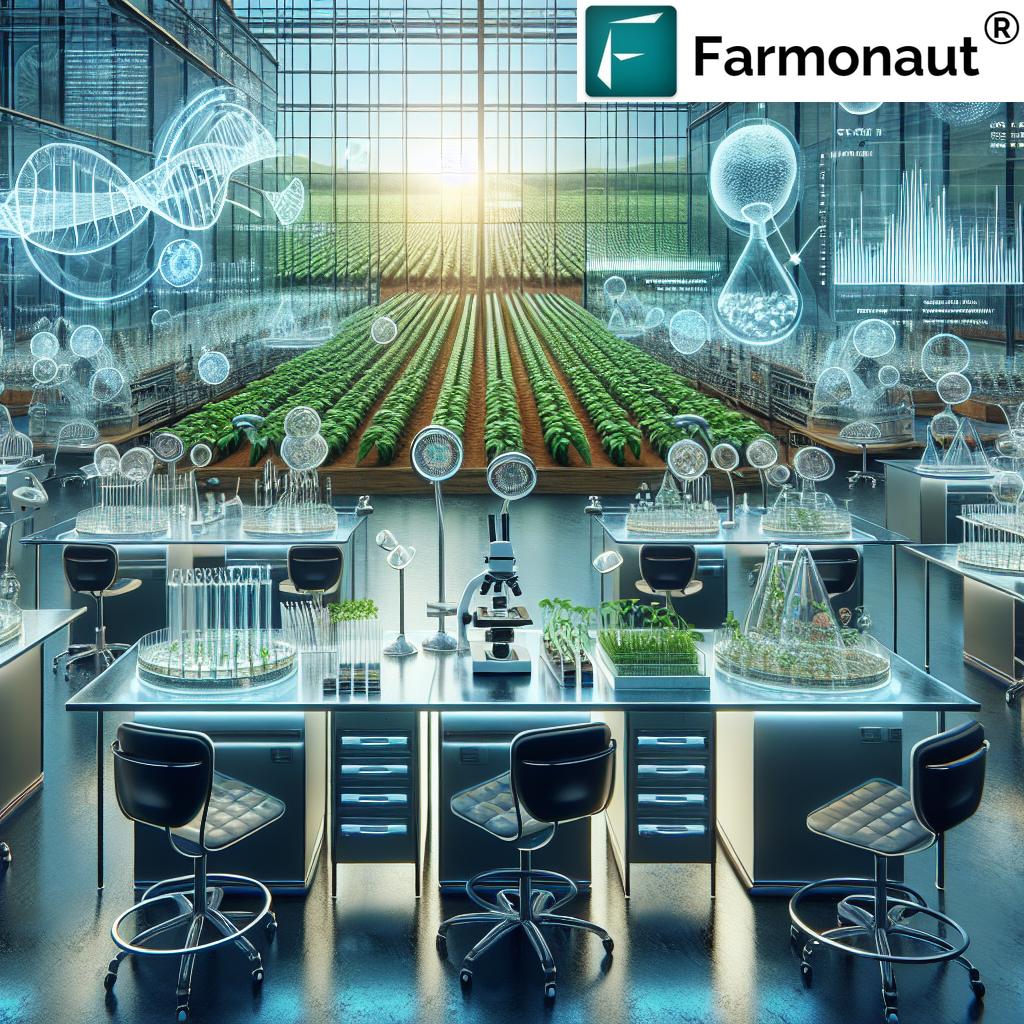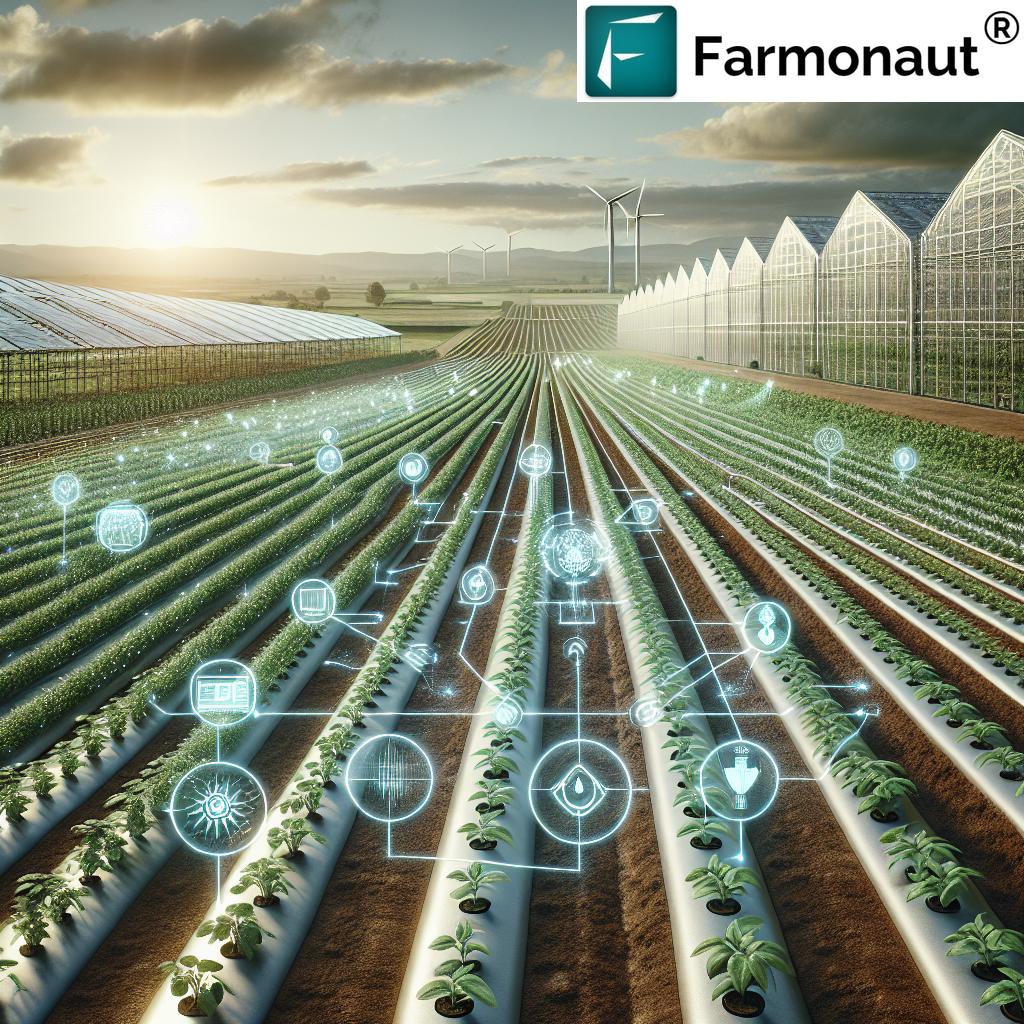Agriculture Internet of Things: India & US 2025 Trends
“By 2025, India’s Agri-IoT market is projected to reach $2.5 billion, reflecting rapid technology adoption in farming.”
“Over 75% of US farms are expected to use smart sensors and precision farming tools by 2025.”
The agriculture internet of things (Agri-IoT) is not just a futuristic buzzword—it’s a transformative force rapidly reshaping farms, supply chains, and food systems, especially in the agriculture of India and agriculture of the United States. As we approach 2025, Agri-IoT technologies including precision farming, smart sensors, and advanced data management systems are driving a sustainable, productive revolution in farming landscapes worldwide. In this comprehensive guide, we’ll dive deep into how the agricultural internet of things is revolutionizing farming practices, detail real-world applications and challenges, and compare trends between India, the US, and the global market.
Table of Contents
- The Transformative Role of the Agricultural Internet of Things
- Agri-IoT Trends in 2025: A Comparative Overview
- Precision Farming – The Core of Agri-IoT
- Smart Irrigation Systems & Water Resource Optimization
- Livestock Monitoring and Health Management
- Soil Health & Crop Disease Detection Technologies
- Agri-IoT Beyond Farms: Smart Supply Chains
- Agri-IoT: India vs United States Compared
- How Farmonaut Powers Smart Agriculture for 2025 and Beyond
- Sustainability, Climate, and Future Challenges
- Comparative Trends Table: Agri-IoT in India vs US (2025)
- Frequently Asked Questions
The Transformative Role of the Agricultural Internet of Things
The agricultural internet of things stands at the forefront of a rapidly evolving agricultural landscape—one that is increasingly data-driven and technology-enabled. Agri-IoT refers to an interconnected network of sensors, devices, and platforms deployed across agricultural fields, barns, and even supply chains, where they continuously collect, monitor, and analyze real-time data. This ecosystem allows farmers and agribusinesses to make informed decisions, minimize wastage, and swiftly adapt to environmental changes.
- Real-time Monitoring & Data Collection: IoT sensors deployed across fields measure crucial variables—soil moisture, temperature, pH, nutrient status, weather, and livestock health.
- Remote Management: Farmers can access data from anywhere on a mobile device or app, optimizing irrigation, fertilization, pest management, and even resource allocation.
- Efficiency & Sustainability: Agri-IoT allows for input application with pinpoint accuracy, reducing costs and minimizing environmental footprint.
The impact of Agri-IoT is especially pronounced in the agriculture of the US and agriculture of India—two nations with massive, yet fundamentally different agricultural sectors. As we move into 2025, both countries are set to shape the global narrative on smart, sustainable farming.
Agri-IoT Trends in 2025: A Comparative Overview
The agricultural internet of things is gathering momentum globally, but the pace and trajectory of adoption differ across countries. In India, the focus is on making affordable, scalable solutions for millions of smallholder farmers. In the United States, farms are larger and investments in advanced tech—including autonomous tractors, drone networks, and machine learning analytics—are rapidly growing.
- India: Emphasis on affordable IoT devices, localized advisory, and leapfrogging to mobile-first solutions.
- United States: Pioneering large-scale IoT deployment with integrated AI-driven systems, big data, and automated farm machinery.
- Globally: Agri-IoT enables supply chain traceability, sustainability tracking, and climate-smart agriculture.
How AI Drones & Agri-IoT are revolutionizing farms in 2025
Precision Farming – The Core of the Agricultural Internet of Things
Precision farming is the cornerstone Agri-IoT application—it leverages data generated from IoT sensors to direct agricultural inputs with surgical precision.
Key Elements of Precision Agriculture Enabled by IoT:
- Soil Sensors & Moisture Detectors: Embedded IoT devices in fields relay real-time soil health information such as moisture, electrical conductivity, nutrients, and pH levels.
- Weather Stations: On-field weather sensors provide hyper-local weather forecasts, rainfall probabilities, and temperature/humidity data—enabling smarter irrigation and disease management.
- Precision Irrigation: By linking soil, weather, and crop data, smart irrigation systems minimize water wastage and schedule irrigation events only when and where crops require.
- Adaptive Fertilization & Pesticide Application: Instead of blanket applications, sensors and drones direct inputs to specific plants or areas, reducing costs and minimizing environmental impact.
Precision farming, powered by the agricultural internet of things, not only optimizes yield but also delivers critical benefits for sustainability.
Discover how AI and satellite systems deliver real-time insights for smart farming
Smart Irrigation Systems & Water Resource Optimization
With water scarcity remaining a global challenge, especially in critical agricultural regions of India and the United States, smart irrigation systems are among the most valuable Agri-IoT applications. By integrating sensors, weather stations, and AI-driven data analysis, these systems deliver water precisely when and where it’s needed, tremendously improving resource efficiency and reducing costs.
- Soil Moisture Monitoring: Sensors detect soil moisture at different depths, sending data to a central management system that automatically schedules irrigation events.
- Forecast Integration: Smart systems account for rainfall forecasts and adjust irrigation to avoid overwatering, thereby conserving water and preventing runoff.
- Leak Detection & System Health: Real-time monitoring of irrigation lines helps quickly detect and fix leaks, ensuring efficient water delivery.
Such technologies are vital for sustainable agriculture in water-stressed areas and help guarantee high yields even under climate variability.
Satellite Soil Moisture Monitoring for Precision Irrigation (2025 Technologies)
Livestock Monitoring and Health Management
The agriculture internet of things extends beyond crop farms—the livestock sector is undergoing a digital revolution powered by IoT devices:
- Biometric Sensors and Wearables: IoT collars and ear tags continuously monitor animal activity, detect early signs of disease, and monitor reproductive cycles.
- GPS Tracking: Real-time geolocation enables optimized grazing management and quick retrieval in vast pastures.
- Environmental Controls: Sensors in barns regulate temperature and humidity, ensuring animal comfort and health.
Such real-time monitoring minimizes disease risks, improves herd health, and enhances operational efficiency.
How Satellite-Based Crop Health Monitoring is Revolutionizing Farming
Soil Health & Crop Disease Detection Technologies
Maintaining soil health and managing crop disease are fundamental to sustainable farming. Agri-IoT enables proactive detection and management through:
- Soil Quality Sensors: Continuous soil data allows for targeted amendments, maintaining fertility while reducing unnecessary input usage.
- Remote Sensing: Drones and satellites identify disease outbreaks or pest infestations quickly so that actions can be taken before serious damage occurs.
- AI-Powered Analytics: Data-driven models flag abnormal plant health indicators, enabling farmers to adjust management in real time.
These innovations enable optimized use of fertilizers and pesticides, reducing environmental impact and boosting overall yields.
Smart Farming: Precision Tech & AI for Enhanced Sustainability
Agri-IoT Beyond Farms: Smart Supply Chains & Traceability
Agri-IoT technologies are not confined to fields and barns. They are now crucial for traceability, logistics, and food safety in supply chains that span continents.
- Blockchain Integration: Secure and transparent record-keeping ensures that food origins, certifications, and handling histories are available end-to-end.
- Cold Chain Monitoring: Sensors track temperature and humidity from field to retail, ensuring quality and reducing spoilage.
- Inventory Management: IoT devices keep track of storage levels and alert for potential issues, minimizing post-harvest losses.
For more on secure traceability leveraging blockchain and IoT, read about Farmonaut’s Traceability Solutions—used in agriculture for building consumer trust and verifying authenticity.
Precision Tech & AI in Modern Agricultural Supply Chains
Agri-IoT: India vs United States Compared
The adoption patterns and challenges in Agri-IoT deployment are shaped by deeply rooted differences between the agriculture of India and the agriculture of the United States:
India (agriculture of india):
- Dominated by smallholder and fragmented farms.
- Cost and digital literacy barriers are major hurdles.
- Rapid uptake of smartphone-based advisory systems and mobile-friendly IoT solutions—making it a leading example in “leapfrogging tech” for millions of farmers.
- Government and private sector working to provide affordable solutions, weather forecasts, and customized crop health alerts.
United States (agriculture of the us):
- Characterized by large-scale commercial farms; high per-farm investment in sophisticated IoT systems, automation, and AI.
- Adoption of autonomous tractors, AI-driven management platforms, and drone networks is mainstream.
- Digital infrastructure and farmer education programs support widespread utilization of advanced IoT applications.
- Greater integration with global supply chains, traceability, and climate monitoring.
Connect Your Farms with Satellite Agri-IoT in Just 2 Minutes
How Farmonaut Powers Smart Agriculture for 2025 and Beyond
As the agriculture internet of things continues to revolutionize global farming, making innovative and affordable technologies accessible to all players in the value chain remains a key challenge—and opportunity. At Farmonaut, we are dedicated to equipping farmers, agribusinesses, governments, and allied industries with satellite-driven, data-based Agri-IoT solutions that are scalable, sustainable, and easy to use.
- Satellite-Based Monitoring: We use multi-spectral satellite imagery to monitor crop health, soil moisture, and vegetation vitality (NDVI)—empowering users to make informed decisions on input management and resource allocation.
- Jeevn AI Advisory: Our AI-powered advisory system delivers real-time weather forecasts, disease alerts, and tailored recommendations for farm management—all via simple web or mobile interfaces.
-
Blockchain-based Traceability: We offer traceability tools for supply chains in agriculture, enhancing transparency and building consumer trust.
- Explore Product Traceability Solutions in agriculture
- Fleet and Resource Management: Our platform enables fleet monitoring and resource management for both small and large farm businesses, supporting efficient logistics and minimizing operational costs.
- Environmental Impact Monitoring: Farmonaut provides actionable data for tracking carbon footprints and promoting sustainable practices in agriculture.
- Loans & Insurance for Agriculture: Our satellite-powered verification systems aid banks & insurance partners in offering loans and crop insurance, reducing fraud and providing broader access to financing for farming communities.
-
Multi-Platform Access & API Integration: We offer Android, iOS, Web App solutions and robust APIs for developers and agribusinesses to integrate satellite insights directly into their workflows—
see our API Documentation. - Scalable Subscription Model: Our flexible pricing plans and subscription options make high-tech solutions accessible and affordable for all.
Satellites, AI, and Geotagging: The Vision for Smart, Sustainable Farms
Explore our advanced Large Scale Farm Management Platform — designed for agribusinesses and corporate farm owners seeking scalable remote monitoring and smart resource deployment.
Farmonaut Subscriptions: Affordable Agri-IoT for All
“By 2025, India’s Agri-IoT market is projected to reach $2.5 billion, reflecting rapid technology adoption in farming.”
“Over 75% of US farms are expected to use smart sensors and precision farming tools by 2025.”
Agri-IoT, Sustainability, Climate, and Future Challenges
The promise of the agricultural internet of things extends far beyond efficiency and productivity. It is a driver of environmental sustainability and resilience as agriculture grapples with:
- Climate Change: Shifting rainfall patterns and temperature extremes require adaptive decision-making powered by real-time data.
- Resource Scarcity: Precision use of water, fertilizers, and pesticides is essential for sustainable production and regeneration of natural resources.
- Food Security: Smarter management and inventory tracking reduce loss and help feed a growing population.
Yet, challenges remain. These include:
- Infrastructure Gaps: Digital connectivity and reliable power are still limited in many rural areas, especially in developing countries like India.
- Digital Literacy: Ensuring that all farmers—from smallholders to large operations—have the knowledge and support to fully benefit from Agri-IoT.
- Data Privacy & Security: Safeguarding farm and business data from misuse or cyber threats as agriculture becomes increasingly automated.
- Cost: Making advanced solutions both accessible and affordable for diverse stakeholders in the agricultural value chain.
Solutions that support carbon footprint accountability and regulatory compliance are becoming increasingly important—discover Farmonaut’s Carbon Footprinting Tool designed to track, analyze, and reduce environmental impact across agricultural operations.
Comparative Trends Table: Agri-IoT in India vs US (2025)
| Country | Estimated Agri-IoT Adoption Rate (2025, %) | Leading IoT Applications | Projected Market Value (2025, USD) | Key Benefits Noted | Major Challenges |
|---|---|---|---|---|---|
| India | 35-45% |
Soil moisture sensors, weather stations, mobile advisory apps, remote satellite monitoring, smart irrigation |
$2.5 Billion |
Crop productivity, resource efficiency, market access for smallholder farmers |
Rural digital infrastructure, cost barriers, digital literacy, scale |
| United States | ~75-80% |
Autonomous tractors, drone monitoring, advanced analytics, livestock health wearables, farm management systems |
$7+ Billion |
Precision yield optimization, labor cost reduction, climate resilience |
Scalability, upfront investment, data security |
| Global Average | ~55-60% |
Soil & climate sensors, smart irrigation, supply chain traceability |
$15+ Billion | Sustainability, efficiency, quality improvement | Regional disparities, connectivity, standardization |
Frequently Asked Questions (FAQ): Agriculture Internet of Things in 2025
What is the agriculture internet of things (Agri-IoT)?
The agriculture internet of things (or Agri-IoT) refers to the interconnected network of smart devices, sensors, machines, and cloud platforms that collect, analyze, and transmit data to improve farm management, resource efficiency, and sustainability.
How does Agri-IoT benefit smallholder farmers in India?
Agri-IoT provides smallholder farmers with access to real-time weather updates, soil health information, pest and disease alerts, and personalized crop management advice—helping them increase yields, reduce costs, and adapt to climate changes.
What are the most common Agri-IoT applications in the United States?
Autonomous tractors, drone-based crop and livestock monitoring, precision irrigation, advanced data analytics, and end-to-end supply chain traceability are the most commonly adopted applications in the agriculture of the US.
How secure is my farm’s data with Agri-IoT technologies?
Data security is a key concern. Users should choose solutions that encrypt sensitive data, use secure data transfer protocols, and offer options for blockchain-based traceability to prevent fraud or illicit access.
Can Agri-IoT help make agriculture more sustainable?
Absolutely. By optimizing use of water, fertilizer, energy, and pesticides, Agri-IoT minimizes environmental impact and helps farmers adapt to climate change, while also tracking progress via tools like carbon footprinting dashboards.
Are Farmonaut’s Agri-IoT solutions available for all farm sizes?
Yes! We offer scalable subscriptions and platform access for everyone—from smallholder operations to large agribusinesses, as well as apps for Android, iOS, and web browser. API integration is also available.
Conclusion: The Transformative Future of the Agriculture Internet of Things
The agricultural internet of things is not an option—it is the new standard for modern, sustainable agriculture. By 2025, as both India and the United States lead with innovative applications and broader adoption, Agri-IoT’s role in driving efficiency, sustainability, and profitability—while ensuring food security—will only become more pronounced. Through integrated data, precise management, and scalable technology solutions, such as those offered by Farmonaut, a resilient and productive farming future is within reach for farmers, agribusinesses, and governments worldwide.
As we progress, let’s embrace the power of connectivity, data, and smart management in agriculture—further enabling the next green revolution that serves both people and planet.















